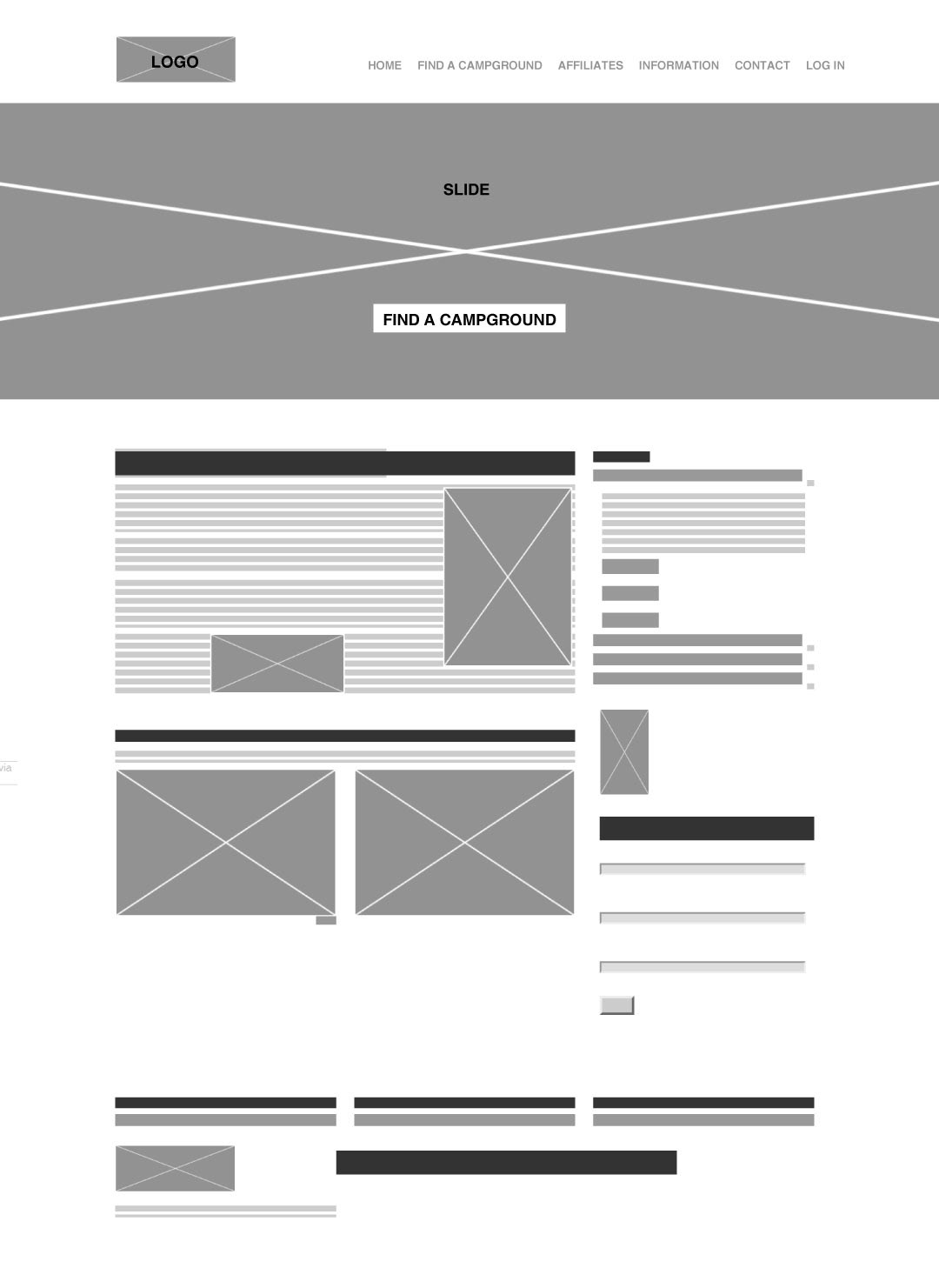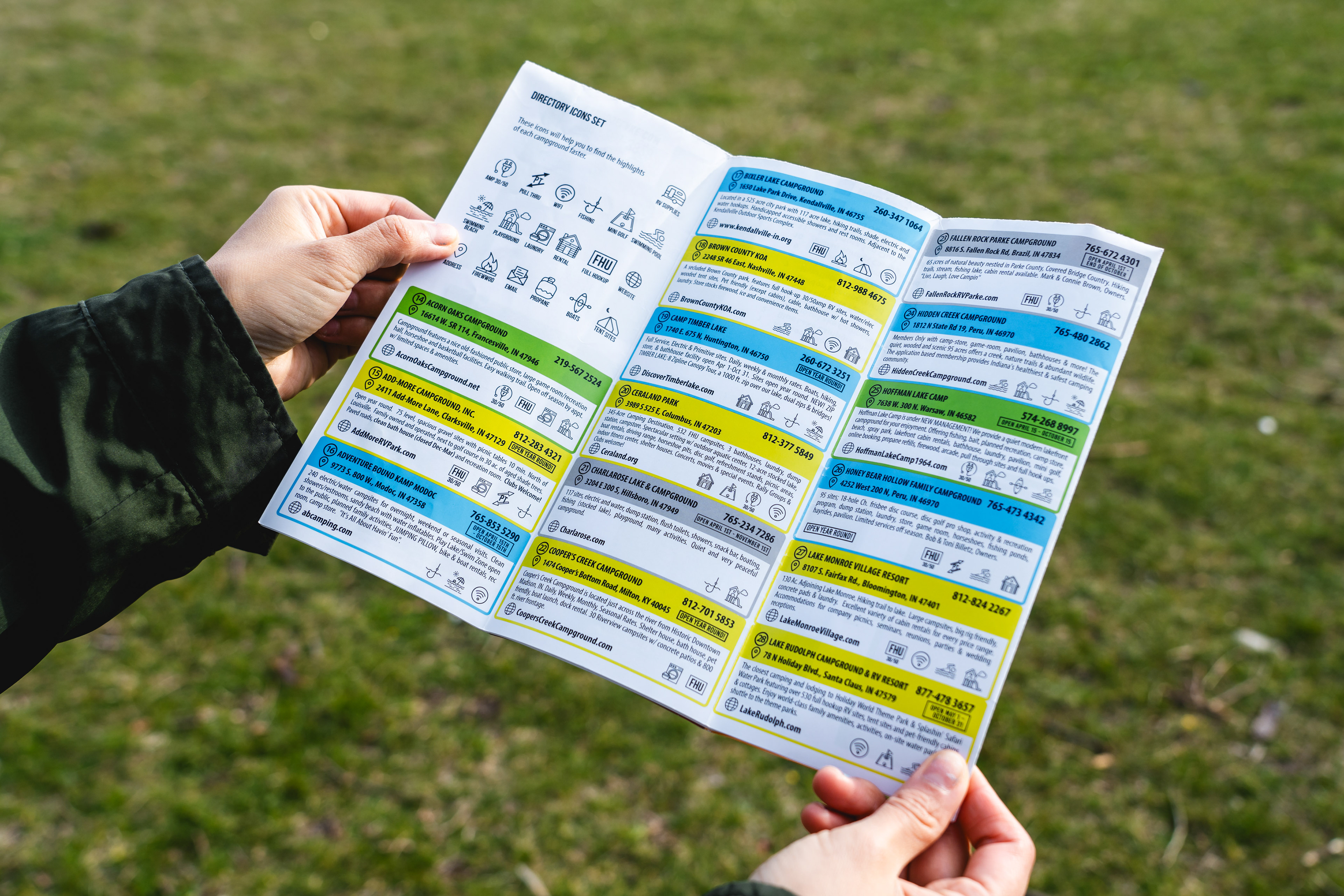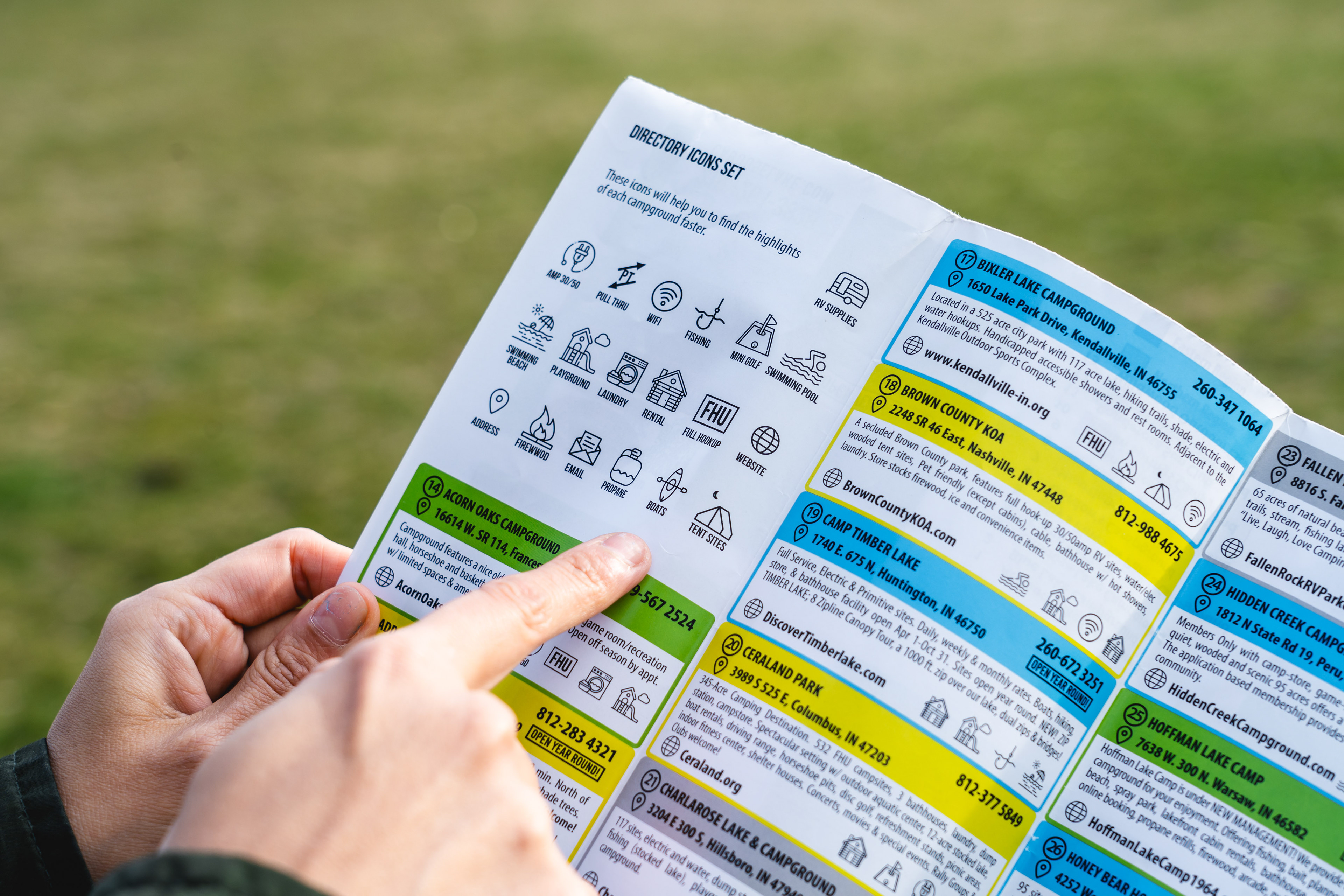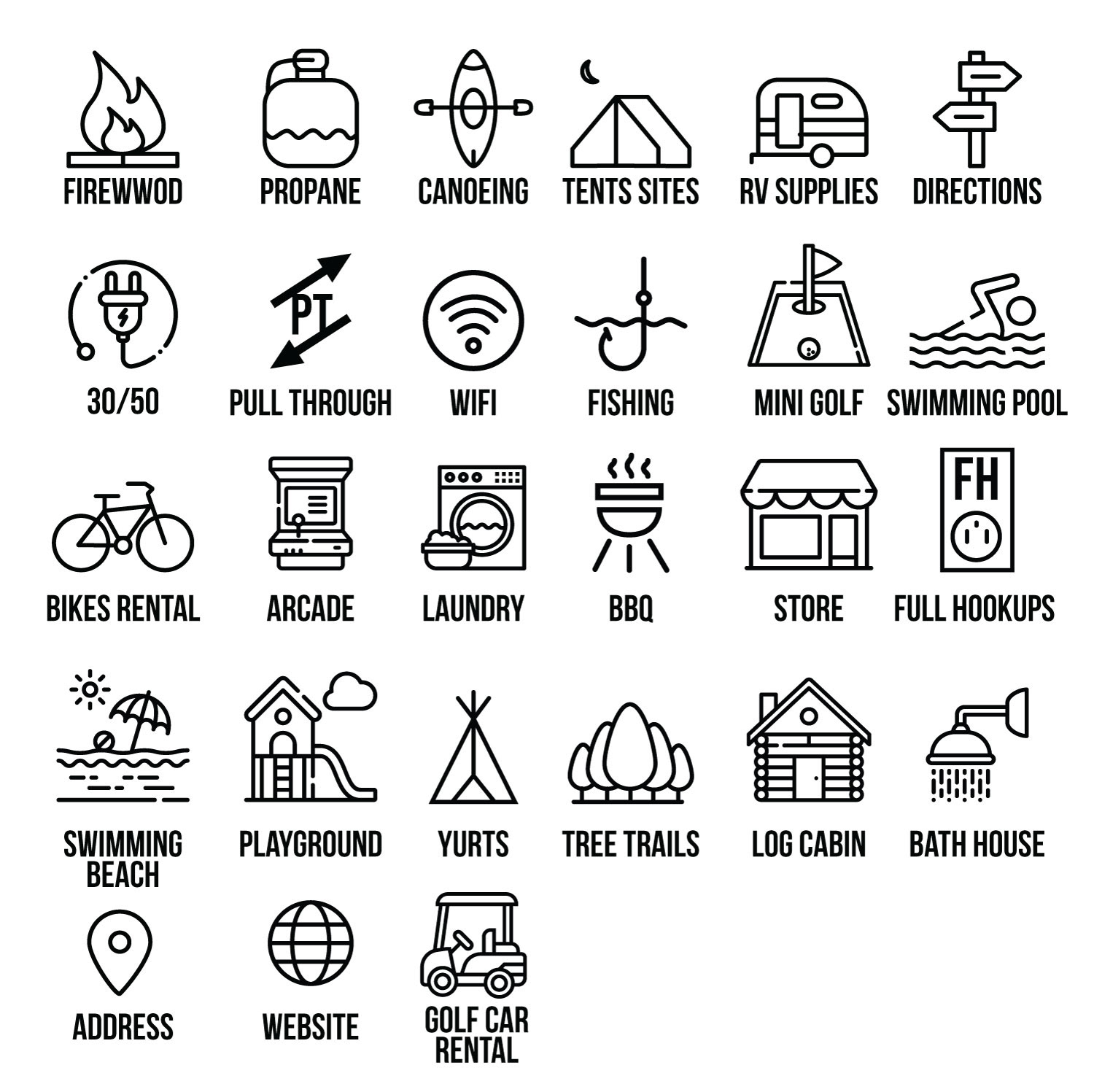ICOA Camp Indiana Product Design
Streamlined Marketing and Design for Indiana Campground Directory
Client: Campground Owners Association of Indiana
Role: Product Design & UX Consultant
Deliverables: Website Re-design, Print Directory
Team: Experience Designer (myself) + Full-Stack Developer Carlos Quiñonez
Executive Summary
As a Marketing and Design Consultant, I spearheaded the transformation of the Campground Owners Association of Indiana's directory. The project's ambition was to create a portable, user-friendly leaflet that reduced printing costs and enhanced the digital user experience.
As a Marketing and Design Consultant, I spearheaded the transformation of the Campground Owners Association of Indiana's directory. The project's ambition was to create a portable, user-friendly leaflet that reduced printing costs and enhanced the digital user experience.
Project Objective
the goal was to provide a dynamic listing of Indiana's campgrounds in a cost-effective, easily navigable format, linking print and digital mediums for travelers and overnighters in the state,
the goal was to provide a dynamic listing of Indiana's campgrounds in a cost-effective, easily navigable format, linking print and digital mediums for travelers and overnighters in the state,
Strategic Design and Marketing Approach
I undertook extensive UX research to determine the most user-friendly format for the guide, which informed the shift to a folded leaflet. This format ensured portability and ease of use, with a clear and concise map layout for campground locations. The design process involved close collaboration with a team of front-end, back-end engineer and a copywriter, leading to a harmonious blend of design and technology that emphasized the directory's ease of use and connectivity to the website.
I undertook extensive UX research to determine the most user-friendly format for the guide, which informed the shift to a folded leaflet. This format ensured portability and ease of use, with a clear and concise map layout for campground locations. The design process involved close collaboration with a team of front-end, back-end engineer and a copywriter, leading to a harmonious blend of design and technology that emphasized the directory's ease of use and connectivity to the website.
The marketing strategy was twofold: distribute the physical directory across rest areas in Indiana and the Chicago area, and promote the digital directory through a strategic social media campaign. The design elements of the leaflet were reflected on the website to provide a consistent user experience, leveraging the same color schemes, typography, and iconography.
Contributions and Leadership
I directed the project's design and marketing strategy, managed the team, and ensured strategic alignment across all aspects of the campaign.
Outcomes and Achievements
The result was a successful directory distribution, a 25% boost in web traffic, and a 60% cut in printing costs, demonstrating effective print-digital integration.
Contributions and Leadership
I directed the project's design and marketing strategy, managed the team, and ensured strategic alignment across all aspects of the campaign.
Outcomes and Achievements
The result was a successful directory distribution, a 25% boost in web traffic, and a 60% cut in printing costs, demonstrating effective print-digital integration.
Reflections and Insights
This endeavor highlighted the value of user-centric design and the need for adaptable materials for diverse user groups, including a significant senior demographic that values printed resources alongside digital enhancements.
This endeavor highlighted the value of user-centric design and the need for adaptable materials for diverse user groups, including a significant senior demographic that values printed resources alongside digital enhancements.
Design Process
The problem
The main challenge for the Camp Indiana project involved enhancing campground visibility for users of the original print guide, while updating the website to ensure it provides an experience that mirrors the print guide's feel. This effort aimed at making the digital platform more intuitive and familiar to users accustomed to the print version. Additionally, the project sought to reduce printing costs by adopting digital solutions, striking a balance between improving user experience and achieving operational efficiencies.
1. Empathize
The project began with a deep dive into understanding the target users - travelers and overnighters in Indiana. Utilizing surveys, user interviews, and analytics, we gathered insights on preferences, behaviors, and pain points related to finding and selecting campgrounds.
Interviews with campground visitors and owners highlighted a preference for visual information, corroborated by web analytics indicating a significant desktop usage, this behavior was highly co-related with the main users that comprehend the age of 45 to 65.
Our research indicated that 60% of users, especially those above the age of 55, prefer a physical guide for its accessibility and ease of use during travel.


2. Define
The user research led to defining the project objective: to provide a dynamic, easily navigable, cost-effective listing of Indiana's campgrounds that links print and digital mediums, catering to both spontaneous and planned travel needs.
Users expressed a desire for a guide that quickly directs them to key amenities and visually represents campground offerings without overwhelming details.
Users expressed a desire for a guide that quickly directs them to key amenities and visually represents campground offerings without overwhelming details.
3. Ideate
Ideation sessions focused on brainstorming user-friendly formats for the guide. The decision to adopt a folded leaflet format was driven by its portability and ease of use. Simultaneously, ideas for a cohesive digital directory were developed to ensure a seamless user experience across platforms.
Screenshot Ideation Session
Brainwriting session made in Miro
4. Prototype
Prototypes for the leaflet and the website were developed, emphasizing clarity, ease of navigation, and aesthetic consistency with the brand. Notably, the leaflet prototype led to a 60% reduction in printing costs without sacrificing design quality or information accessibility.







5. Test
The prototypes were tested with target users, leading to valuable feedback that informed further refinements. Specifically, the website UX redesign, informed by user testing, resulted in a 25% increase in web traffic and doubled the average session duration from 1 minute to 2 minutes, suggesting that users found the website content more engaging and valuable.






Implementation and Outcomes
Upon implementing the redesigned print guide and the enhanced digital directory, we observed:
Successful directory distribution with reduced printing costs and increased digital engagement.
Feedback from Campground Owners Association members indicated an uptick in visitors to campgrounds, attributed to the improved guide and website.
Reflections
This project underscored the importance of a user-centered approach in bridging print and digital mediums to serve diverse user groups effectively. The substantial savings in printing costs and the significant boost in digital engagement highlight the project's success in creating materials that are not only visually appealing and informative but also cost-effective and environmentally considerate. Moreover, the increase in campground visitors and the enhanced website metrics (traffic and session duration) validate the strategic marketing and design choices made during the project. These outcomes reflect the project's overarching goal: to enhance the travel planning experience for Indiana's visitors, thereby supporting local campgrounds through increased patronage. This endeavor exemplifies how the Design Thinking process can lead to innovative so
ICOA Directory 2021-2022
Final Print Design

Print File Side A

Print File Side B

Cover Prototype 1

Cover Prototype 2

Icon Set for User Validation

Map for User Validation


